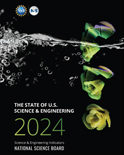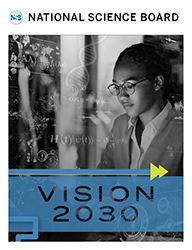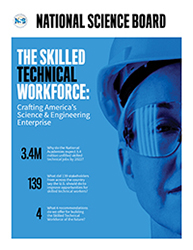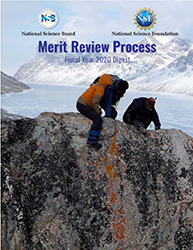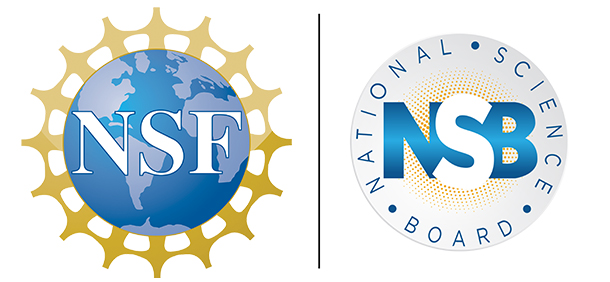
Science & Engineering Indicators 2020: State of U.S. S&E Labor Force
New report completes trio that together portrays the U.S. STEM education and workforce.

A piece of the quantum puzzle (Credit and Larger Version)
September 26, 2019
The National Science Board (NSB) today released a new report on the United States (U.S.) science and engineering (S&E) labor force. The report is the third released this month as part of Science and Engineering Indicators 2020, a congressionally mandated report on the state of the U.S. science and engineering enterprise.
“This report is a treasure trove of data about individuals with S&E expertise who work in all sectors of our economy,” said Julia Phillips, Chair of NSB’s Science and Engineering Policy Committee, which oversees development and production of Indicators in collaboration with NSF’s National Center for Science and Engineering Statistics. “In the education, business, and government sectors, these individuals help create and advance our scientific and technological knowledge, transform these advances into goods and services, and fuel our country’s economy, security, and quality of life.”
With the 2020 edition, Indicators is changing from a single report released every two years to a set of disaggregated and streamlined reports published on a rolling basis. Earlier this month, the NSB released its Elementary and Secondary Mathematics and Science Education report, which covers national trends in K-12 student achievement and compares U.S. student performance with that of other nations, and the Higher Education in Science and Engineering report on trends in S&E higher education in the U.S. and comparisons to other countries.
Together, these three reports provide a portrait of the people who engage in S&E in the U.S.
According to the newest report:
- Nearly 7 million people are in S&E jobs and almost 25 million have completed an S&E bachelor’s degree or higher. In addition, over 17 million people constitute the skilled technical workforce—individuals who use S&E skills in their job but do not have a bachelor’s degree.
Since 1960, the S&E workforce has grown faster than the overall workforce. This growth trend is expected to continue through 2026, with S&E jobs predicted to grow by 13% compared with 7% growth in the overall workforce. Occupations such as computer and mathematical scientists and health care practitioners and technicians, which employ the most workers in S&E and S&E-related jobs, are expected to grow the most between 2016 and 2026.
- S&E workers—including skilled technical workers—tend to enjoy higher incomes and lower unemployment than do their counterparts in the general workforce.
- The business sector employs by far the most S&E workers with at least a bachelor’s degree (71%). The education sector employs 18% and the government 11%.
- As a proportion of all academically employed science, engineering, and health doctorate holders, those employed as full-time faculty have been steadily decreasing, from about 90% in the early 1970s to less than 70% in 2017. The wide range of career pathways for SEH doctoral holders is highlighted in NSB’s dynamic infographic.
- Since 1993, the number of blacks, Hispanics, and American Indians or Alaska Natives with their highest degree in S&E collectively increased nearly four-fold.
- The number of women in S&E jobs or who hold a bachelor’s degree or higher in S&E doubled since 1995.
- 2017 data show that female veterans were more likely to work in S&E-related occupations (28%) or have a highest degree in an S&E-related field of study (25%) relative to nonveteran women (19% and 16%, respectively).
“The numbers of women and minorities who hold S&E degrees and are in the S&E workforce have increased but these groups remain underrepresented relative to their proportion in the U.S. population, given the rapid increase in the number of S&E jobs overall,” said NSB Chair Diane Souvaine. “So, we have had significant success at welcoming more women and underrepresented minorities into the S&E workforce, but we need these participation rates to increase more rapidly for the good of the country.”
About Science and Engineering Indicators
Indicators is prepared under the guidance of the National Science Board by the National Center for Science and Engineering Statistics, a federal statistical agency within the National Science Foundation.
About the National Science Board
The National Science Board and the National Science Foundation's Director jointly head NSF. NSB identifies issues critical to NSF's future and establishes the agency’s policies within the framework of applicable national policies set forth by the President and the Congress. The Board also serves as an independent body of advisors to both the President and the Congress on policy matters related to science and engineering and education in science and engineering. NSB’s 24 members are appointed by the President for six-year terms and selected for their eminence in research, education and records of distinguished service.
Media contact: Nadine Lymn, National Science Board Office, (703) 292-2490, nlymn@nsf.gov
Useful NSB Web Sites:
Home Page: http://www.nsf.gov/nsb
Media Contact: http://www.nsf.gov/staff/staff_bio.jsp?lan=nlymn&org=NSF
News: http://www.nsf.gov/nsb/news
Meetings: http://www.nsf.gov/nsb/meetings
Publications: http://www.nsf.gov/nsb/publications
Facebook: https://www.facebook.com/NationalScienceBoard
Twitter: Twitter: https://twitter.com/intent/user?screen_name=NSF_NSB
YouTube: https://www.youtube.com/channel/UCkrHRzuGSrPp2haQs0T_Pww
To view PDF documents, please download Adobe Acrobat Reader.
